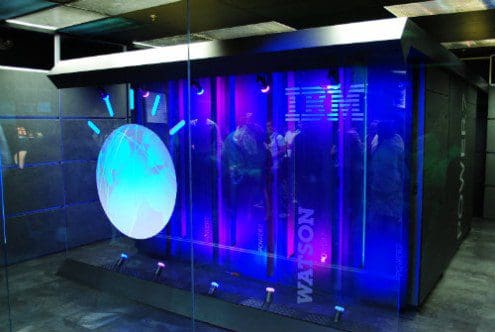Cognitive Computing: Solving the Big Data Problem?
With a shortage of data scientists, what are the alternatives for making sense of Big Data? We examine Cognitive Computing, its strengths, and how it can fit into the current Big Data landscape.

There’s a problem within big data. The problem is that there’s too much information and not enough talent to manage it. The supply of analysts and data scientists can’t keep up with the ever growing demand for this type of talent. This shortage presents a problem, because even the most advanced data platforms are useless without experienced professionals to operate and manage them.
How do we solve this? More training and better academic programs? Possibly, but what if there was another solution. What if instead we trained computers to do the work for us, or at least make it easier to manage data tools? Improvements in cognitive computing are making that an approaching reality.
What Is Cognitive Computing
In the simplest sense possible, cognitive computing is the creation of self-learning systems that use data mining, pattern recognition and natural language processing (NLP) to mirror the way the human brain works. The purpose of cognitive computing is to create computing systems that can solve complicated problems without constant human oversight.
The Potential for Big Data Analytics
With that definition in mind, what would those capabilities provide for big data analytics? Well, as cliché as it sounds, the possibilities are really endless, but let’s discuss how cognitive computing could help less-experienced staff handle the complexities of data.
Cognitive computing will bring a high level of fluidity to analytics. Thanks to improvements in NLP, it’s becoming easier and easier to communicate with our machines. Staff who aren't as familiar with data language or data processing, which are normally essential for proper analytical functions, could still interact with programs and platforms the way humans interact with each other.
Meaning, by providing simple commands and using normal language, platforms built with AI technology could translate regular speech and requests into data queries, and then provide responses in the same manner they were received. With this kind of functionality, it would be much easier for anyone to work in the data field.
Cognitive Computing Capabilities
While that sounds all well and good, many might question when we’ll actually reach that point. After all, we’re in a pinch with talent shortages now, so a solution designed for years in the future won’t do us much good. Well, AI and machine learning aren’t some abstract ideas reserved for future generations. They already exist, with some very impressive examples to showcase, like Google’s DeepMind project and Qualcomm’s Zeroth Platform.
DeepMind is a highly advanced computer developed to mirror some of the brain’s short-term memory properties. Essentially, the computer is built with a neural network adapted to interact with external memory. DeepMind stores memories which it can later retrieve and use to understand new information and perform tasks beyond what it was programmed to do. The brain-like abilities of DeepMind mean that analysts can rely on commands and information, which the program can compare with past data queries and respond to without constant oversight.
Watson is a cognitive computing system with built-in natural language processing, hypothesis generation and evaluation and dynamic learning. This system is a lot more advanced than the digital assistants on our smartphones. In fact, the system functions so well, it allows users to ask questions in plain language, which Watson then translates into data language for querying. Does it work? Well, it was able to defeat two of the greatest Jeopardy champions of all time.
The Zeroth Cognitive Computing Platform is designed to rely on visual and auditory cognitive computing in order to reflect human-like thinking and actions. That means a device running the platform could recognize objects, read handwriting, identify people and understand the overall context of a setting. So on a phone, for example, the device could adjust automatically when taking pictures at a sunny beach or a moonlight walk. It could also adjust its microphone settings automatically if there is a lot of background noise to deliver better sound quality. Zeroth’s ability to replicate intuitive experiences provides a number of opportunities within sentiment analysis. Its ability to understand scenes and context means that partnered with the right devices and image technology, it cloud decipher how people are feeling based off facial expressions, or if their voice reflects levels of stress or anger.
Finally, on-device intelligence from cognitive platforms lessens the amount of transmissions back and forth to the cloud. This means devices can save on power, while also improving performance and privacy. Without a doubt, advancements in cognitive computing, and infusing AI and machine learning into big data platforms and tools, will not only enable less experienced staff to handle the complexities of data analytics, but also improve the quality of results. With so much information to handle, transferring much of the work to our machines will enable us to react quicker and turn real-time analytics into real-time decisions.
Related:
- Hurwitz: Cognitive Computing and Big Data Analytics
- Deep Learning in a Nutshell – what it is, how it works, why care?
- MetaMind Competes with IBM Watson Analytics and Microsoft Azure Machine Learning
- IHow Deep Learning Analytics Mimic the Mind
